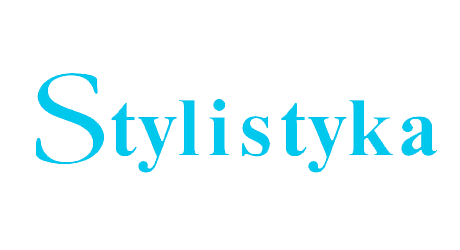Allison T., 2018, Destructive Sublime: World War II in American Film and Media, New Brunswick, NJ: Rutgers University Press.
DOI: https://doi.org/10.2307/j.ctv1fxkkh
Google Scholar
Bender S., 2013, Film Style and the World War II Combat Genre, Newcastle: Cambridge Scholars.
Google Scholar
Brzeski P., 2021, China Box Office: ‘Battle at Lake Changjin’ Marches Past $600M. The Hollywood Reporter. https://www.hollywoodreporter.com/movies/movie-news/battle-at-lake-changjin-box-office-1235029428/. (6 March, 2023).
Google Scholar
Christiansen S. L., 2016, Drone age cinema: action film and sensory assault, London: Tauris. https://doi.org/10.5040/9781350986152.
DOI: https://doi.org/10.5040/9781350986152
Google Scholar
Feng Xiuwen, 2016, On Aesthetic and Cultural Issues in Pragmatic Translation: Based on the Translation of Brand Names and Brand Slogans, Abingdon-on-Thames: Routledge.
DOI: https://doi.org/10.4324/9781315723631
Google Scholar
Fernandez-Ramirez L., 2019, Ground-breaking Expressive Strategies in the War Films of Classical Realism. L’Atalante. Revista de estudios cinematográficos (27). 105–118.
Google Scholar
Guan F., 2022, The Art of War “Dissent Magazine”. https://www.dissentmagazine.org/article/the-art-of-war. (2 December, 2022).
DOI: https://doi.org/10.1353/dss.2022.0043
Google Scholar
Hall K. & R. C. Stein, 2016, The Korean War, Berkeley Heights, NJ: Enslow Publishing.
Google Scholar
He L., 2021, China’s Korean War propaganda movie smashes box office record. CNN. https://www.cnn.com/2021/10/04/business/battle-lake-changjin-china-box-office-intl-hnk/index.html. (30 June, 2024).
Google Scholar
Ho Wai-Chung, 2018, Culture, Music Education, and the Chinese Dream in Mainland China, London and New York: Springer.
DOI: https://doi.org/10.1007/978-981-10-7533-9
Google Scholar
Hoad P., 2021,The Battle at Lake Changjin review – China’s rabble-rousing propaganda war epic, “The Guardian”, sec. Film. https://www.theguardian.com/film/2021/nov/19/the-battle-at-lake-changjin-review. (1 July, 2024).
Google Scholar
Koets M., 2021, The Unforgotten Victory: Why ‘The Battle at Lake Changjin’ Is One of China’s Biggest Films Yet. https://www.whatsonweibo.com/the-unforgotten-victory-why-the-battle-at-lake-changjin-is-one-of-chinas-biggest-films-yet/. (21 June, 2023).
Google Scholar
Kuipers R., 2021, ‘The Battle at Lake Changjin’ Review: A Patriotic Chinese View of the Korean War. Variety. https://variety.com/2021/film/reviews/the-battle-at-lakechangjin-review-zhang-jin-hu-1235143157/. (30 June, 2024).
Google Scholar
Lim Song Hwee & J. Ward, 2020, The Chinese Cinema Book, Bloomsbury Publishing.
Google Scholar
Mastro Oriana Skylar, 2024, Upstart: How China Became a Great Power. Oxford: Oxford University Press.
DOI: https://doi.org/10.1093/oso/9780197695067.001.0001
Google Scholar
Rouiaï Nashidil, 2024, Le rêve chinois passe par les salles obscures: Chine, cinéma et soft power. In Frédéric Lasserre, Éric Mottet & Barthélémy Courmont (eds.), Le soft power en Asie, 133–150. 1st edn. Presses de l’Université du Québec. https://doi.org/10.2307/jj.8973316.14.
DOI: https://doi.org/10.2307/jj.8973316.14
Google Scholar
Ryall J., 2021, Chinese war blockbuster fuels S. Korea anger “Deutsche Welle”. https://www.dw.com/en/chinese-war-blockbuster-fuels-anger-in-south-korea/a-59502113. (30 June, 2024).
Google Scholar
Stubbs J., 2013, Historical Film: A Critical Introduction, London: Bloomsbury Academic.
Google Scholar
Wada Haruki, 2014, The Korean War: An International History, Lanham, MD: Rowman & Littlefield.
Google Scholar
Wang Yichuan, 2022, The Battle at Lake Changjin: A National Aesthetic Paradigm for Chinese Blockbusters, “Journal of Chinese Film Studies”, 2(1), 199–205. https://doi.org/10.1515/jcfs-2022-0009.
DOI: https://doi.org/10.1515/jcfs-2022-0009
Google Scholar
Yan Zhisheng, 2019, Research on the Scattered Perspective Viewing in the Era of Image, 2019 5th International Conference on Economics, Management and Humanities Science (ECOMHS 2019).
Google Scholar
Zhang Haoxuan, 2024, Translating China for the Gazing Eyes—A Case Study of the Battle at Lake Changjin. In Chi Sum Garfield Lau & Kelly Kar Yue Chan (eds.), “The Poetics of Grief and Melancholy in East-West Conflicts and Reconciliations”, 67–81. Singapore: Springer Nature. https://doi.org/10.1007/978-981-99-9821-0_5.
DOI: https://doi.org/10.1007/978-981-99-9821-0_5
Google Scholar


 https://doi.org/10.25167/Stylistyka34.2024.13
https://doi.org/10.25167/Stylistyka34.2024.13
